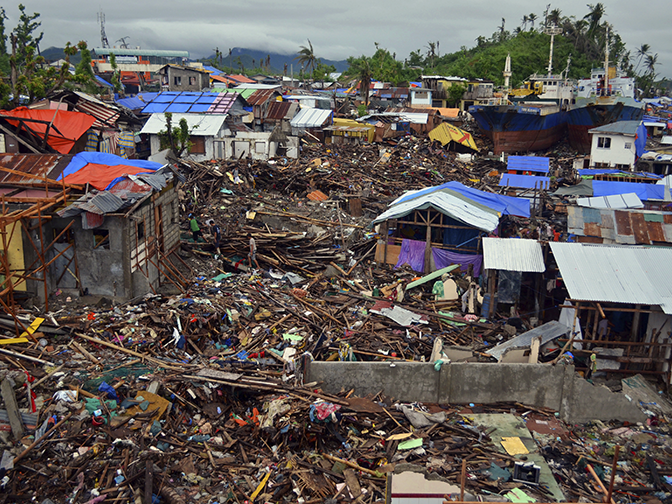

Nguyen Thanh Tung, a forecaster from Vietnam’s National Centre for Hydro-Meteorological Forecasting, has begun a 12-month placement at ECMWF, sponsored by the WMO.
He is working with ECMWF analysts, with special emphasis on evaluating the forecasts and products provided through the WMO’s Severe Weather Forecast Demonstration Project (SWFDP).
The fellowship is the first under a new scheme that envisages ECMWF regularly hosting forecasters from developing countries. It will provide Tung with training and first-hand experience to enhance his professional skills and enable him to make an essential contribution to developing forecasting capabilities in his country.
The Severe Weather Forecast Demonstration Project aims to improve the availability and use of NWP products in developing countries, leading to improved forecasts and warnings of severe weather to save lives, livelihoods and property.
ECMWF supports the project by providing access to its global high-resolution and ensemble forecast products as part of a ‘cascading’ forecast approach, from global NWP centres to regional specialised centres to national meteorological services. The Centre also provides training in the interpretation and use of its graphical products.
Focus on tropical cyclones
For South-East Asia, the project focuses on hazards associated with tropical cyclones, especially heavy rain, strong winds and damaging waves.
The emphasis of the placement at ECMWF is on evaluating the quality of ensemble products for Vietnam and the South-East Asia region that ECMWF provides for the project. Ensemble forecasts provide a range of likely scenarios and give an indication of the confidence forecasters can have in their predictions.
“In Vietnam and South-East Asia, we use heavy rainfall probability charts with thresholds of 50 mm/24 hours and 100 mm/24 hours, as well as charts showing strong winds with thresholds of 30 knots (over land and sea) and 50 knots (over sea), based on ensemble products from ECMWF and other models,” Tung explains. “We use this information, with other products, to draw up risk maps for warnings.”

Damage from Typhoon Haiyan, which hit the Philippines and Vietnam in November 2013. (Photo: Tigeryan/iStock/Thinkstock)
During his time at ECMWF, Tung will investigate and document biases and characteristics of ECMWF’s high-resolution and ensemble rainfall forecasts for up to six days ahead, using a dataset of observations covering the Vietnamese territory.
“The results of the evaluation will become a useful reference source for weather forecasters, showing advantages and disadvantages of ECMWF products, especially in the IFS high-resolution product and ensemble products,” Tung said. “Warnings about severe weather for Vietnam and South-East Asia will become more reliable as a result of the evaluation of ECMWF products.”
As part of his post-fellowship work plan, he aims to pass on information to colleagues in Vietnam about how to use ECMWF’s products for specific locations and for extreme weather.
Specifically, he aims to provide guidance on how to use ECMWF’s ensemble forecasts to predict the track and intensity of tropical cyclones.
Tung’s feedback on the performance of forecasts for South-East Asia will also benefit ECMWF.
Enhancing scientific capabilities
The WMO and ECMWF set up the fellowship programme after the WMO identified a need for specialised training placements to develop capacity in least developed and developing countries. Another goal is to help expand the network of cooperation opportunities between experts dealing with weather and subseasonal to seasonal forecasting at international level.
Yinka Adebayo, Director of the Education and Training Office in the WMO’s Development and Regional Activities Department, explained the rationale for the programme:
"ECMWF is a world leader in numerical weather prediction. Hence, getting an expert from developing countries to work with renowned scientists in an environment with state-of-the-art infrastructure is bound to go a long way towards enhancing the capacity of scientists in the less endowed countries.
"It is WMO’s expectation that this project will further enhance scientific capability in least developed and developing countries, thereby promoting effective global cooperation in the field of meteorology and the application of related knowledge for the benefit of humanity. Of course, it will foster a long-standing relationship between WMO and ECMWF in this important area of scientific endeavour."
One month into his fellowship, Tung has already been making the most of opportunities to gain new skills. “I have been using ECMWF’s Metview application for the first time, and have just attended a week-long training course to learn about it,” he said. “The Centre is a good environment to work and study.”
Top image © Joao Virissimo/Hemera/Thinkstock
